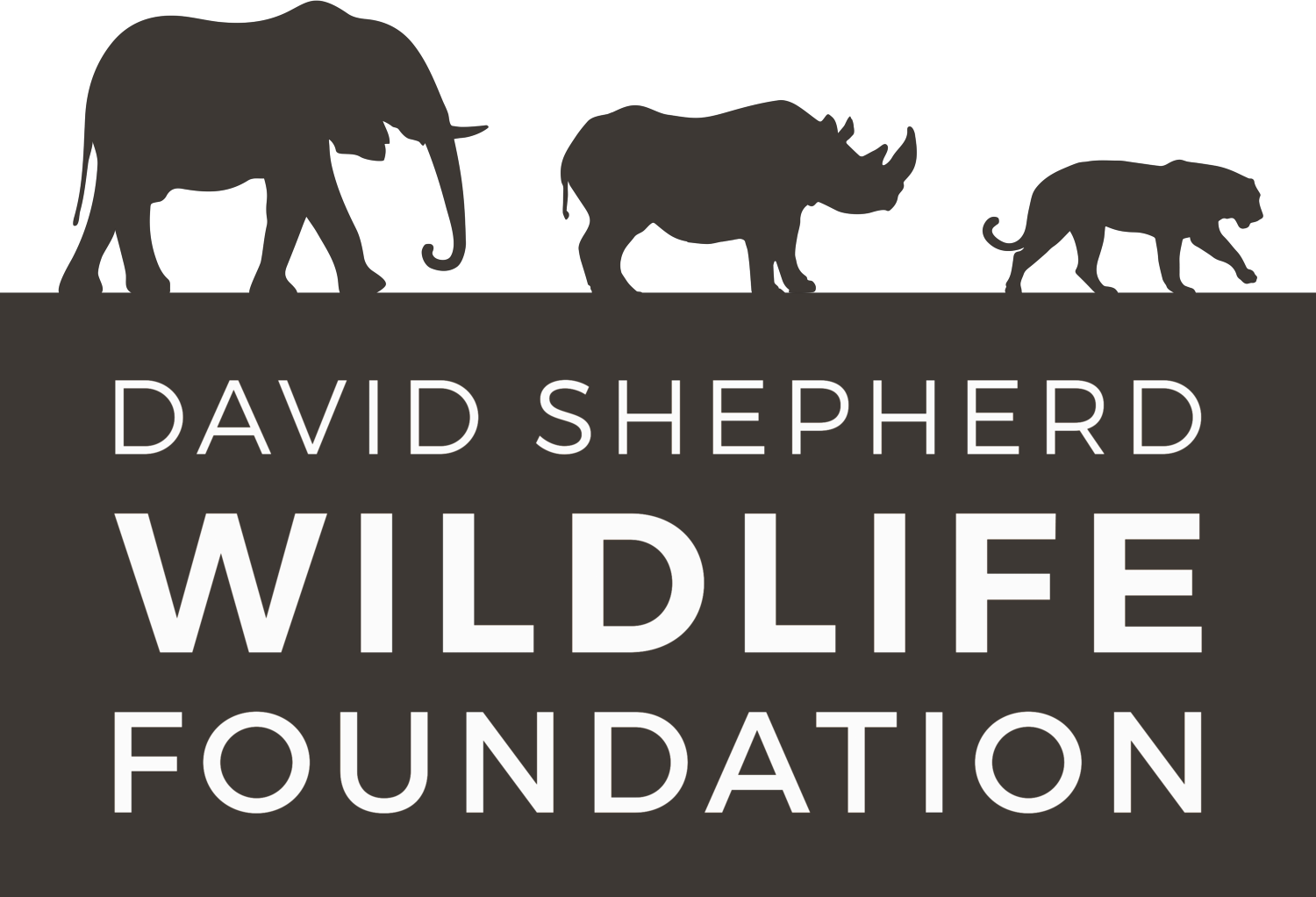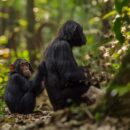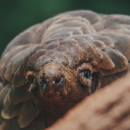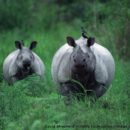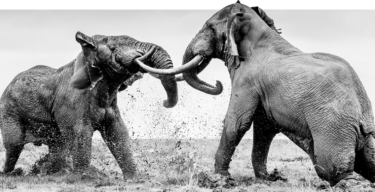
Elephants
It’s said that an elephant never forgets. But if we don’t act, wild elephants may soon be nothing more than a memory. When facing ongoing demand for ivory through the illegal wildlife trade, and the threats of human encroachment and climate change, the largest land mammal on the planet has nowhere to hide.
Elephants at a Glance
Elephants are synonymous with David Shepherd, a renowned wildlife artist and conservationist, and also our founder. He is fondly remembered as “the man who loved giants”.
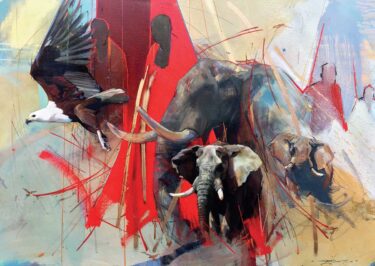
How much wild elephant populations have decreased in the last century.
An elephant is killed every 15 minutes.
Estimated number of African elephants killed each day*
Elephant Species and Status
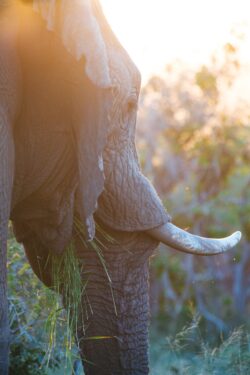
There are three recognised species of elephant.
African bush elephant – endangered
The African bush elephant (Loxodonta africana) – also known as the savannah elephant, is the largest. They are listed as endangered on the International Union for the Conservation of Nature (IUCN) Red List. The African bush elephant has larger, more triangular shaped ears than the Asiatic species, and can also be differentiated by having concave backs. They are distributed across 37 African countries, with the largest populations in southern and eastern regions. Their nomadic, migratory lifestyle has enabled them to adapt to many habitats, including woodlands, forests, grasslands, and wetlands.
African forest elephant – critically endangered
Their smaller cousin, the African forest elephant (Loxodonta cyclotis) is listed as critically endangered. They are restricted to humid forests in the Congo Basin and isolated pockets of west Africa. African forest elephants are the smallest of the extant species. By foraging on seeds and fruit (as well as leaves and bark), they play an important role in maintaining the biodiversity of the Guinean and West Congolese jungles they call home – earning them the local nickname of ‘mega-gardener of the forest’.
Asian forest elephants – endangered
Asian forest elephants (Elephas maximus), also known as Asiatic elephants, are also listed as endangered. Compared to African elephants, they have smaller ears and convex, level backs. They are the only living species within their distinct family group. They can be found across southeast Asia – from India in the west to Nepal in the north, and from Sumatra in the south to as far east as Borneo.
~
Killed by poachers for both bushmeat and to supply the illegal ivory trade, as well as being impacted by habitat loss, encroachment, and human-wildlife conflict, all elephants face an uncertain future. The legendary old ‘tuskers’ (African bull elephants with mature tusks) so loved by David Shepherd are all but gone, impacting the genetic viability and even behaviour of remaining populations.

“Only elephants should own ivory”
Yao Ming.
How to Protect Wild Elephant Populations
Wild elephant populations have declined massively in just over a century.
500 years ago, 25 million elephants roamed Africa. By 1900, that number was down to 10 million. In 1979, 1.3 million remained. Today, only an estimated 415,000 are left. Asian elephants have suffered similar declines, with a 60% drop in their numbers over the last 50 years. It is now estimated that only 40-50,000 remain. And a decade ago, there were fewer than 30,000 forest elephants. Today, that number is likely to have declined much further.
To protect wild elephant populations, we need to prevent illegal killing, cutting off supply to the rampant ivory and bushmeat markets. We also need to drive awareness campaigns and educational programmes, drying up the demand fueling those same markets.
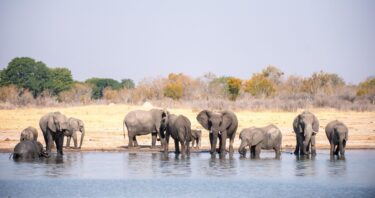
Thousands of elephants are still being lost every year.

With 70% of current elephant range outside of protected areas, we also need to ensure prime elephant habitat is preserved.
Reducing human-wildlife conflict, such as using chilli bombs to deter crop raiding, and offering real-world solutions to those living alongside elephants, will also prevent retaliatory killings and hostile attitudes towards elephants.
You can also help protect wild elephant populations by donating or adopting today through David Shepherd Wildlife Foundation (DSWF).
Elephant related updates.
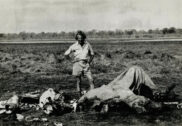


Desirable Dentition
The huge historical declines elephants have endured are linked directly to their tusks (ivory) – which are giant, protruding teeth. Just like ours, they are made up of dentine and enamel. The value attached to ivory – rarer than gold, has driven demand for centuries.
You can help provide vital protection and monitoring for elephants in Zambia by adopting through DSWF today.
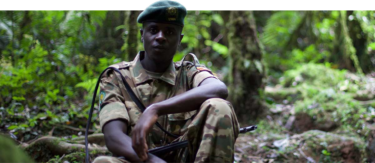
30k+
Elephants are killed each year for their ivory.
Elephant Art
Elephants were a favourite subject of our founder, wildlife artist and conservationist, David Shepherd. They also continue to inspire many of our partner artists today. From David Shepherd originals and prints to modern masterpieces and postcards by today’s best wildlife artists, you’ll find a wide variety of pieces depicting elephants in our shop. 50% of all proceeds go directly to our conservation partners fighting to save endangered species, including our dedicated programmes focused on elephants.
Look out for our ‘Artist of the Month’ and ‘Art for Animals’ special events that often feature specific pieces centred around our chosen species too.
How Donating Can Help
Your donations are vital in funding and supporting our frontline projects and programmes. With your help, DSWF can continue funding the Elephant Orphanage Project in Zambia, as well as providing park protection and anti-poaching support across Africa and Asia. We really can’t do it without you, so please donate today.
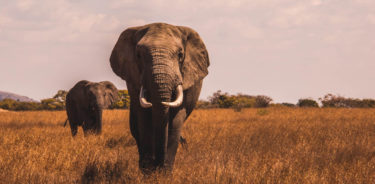
All donations will help us continue our vital conservation work to protect endangered species and turn the tide on extinction.
